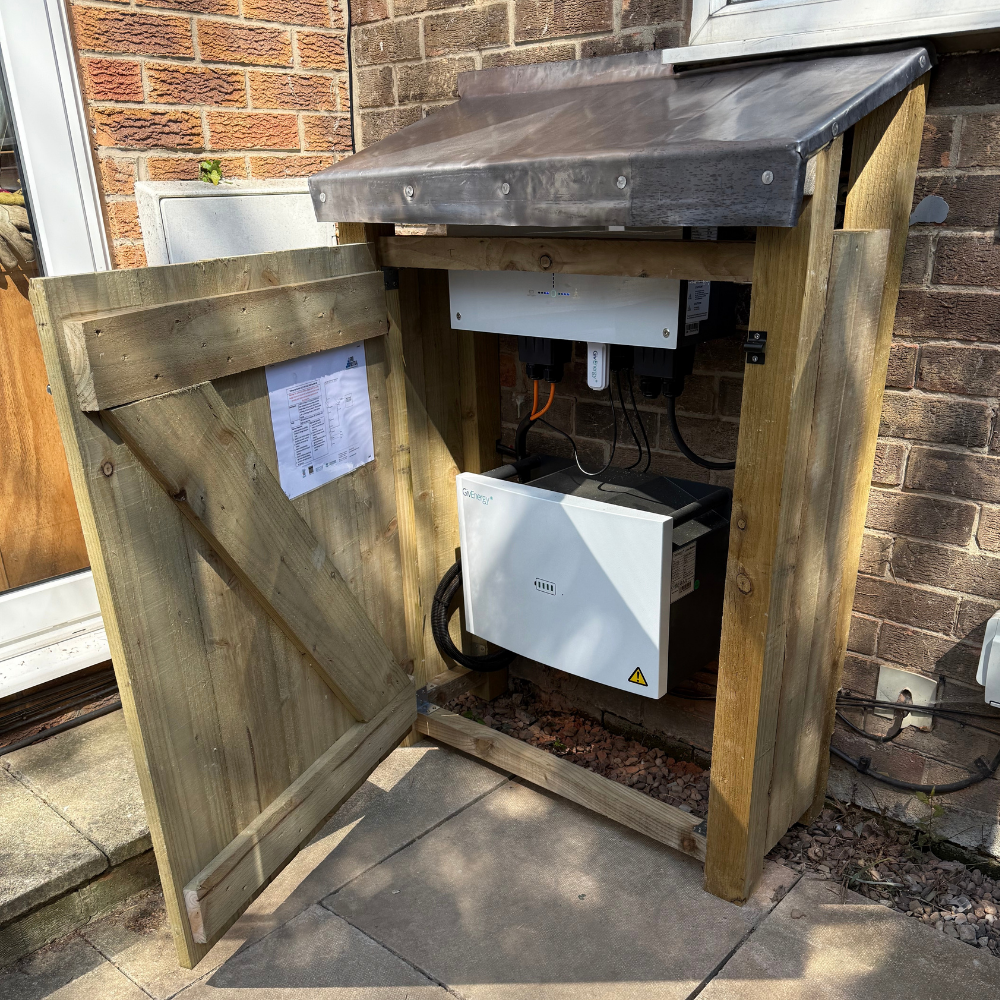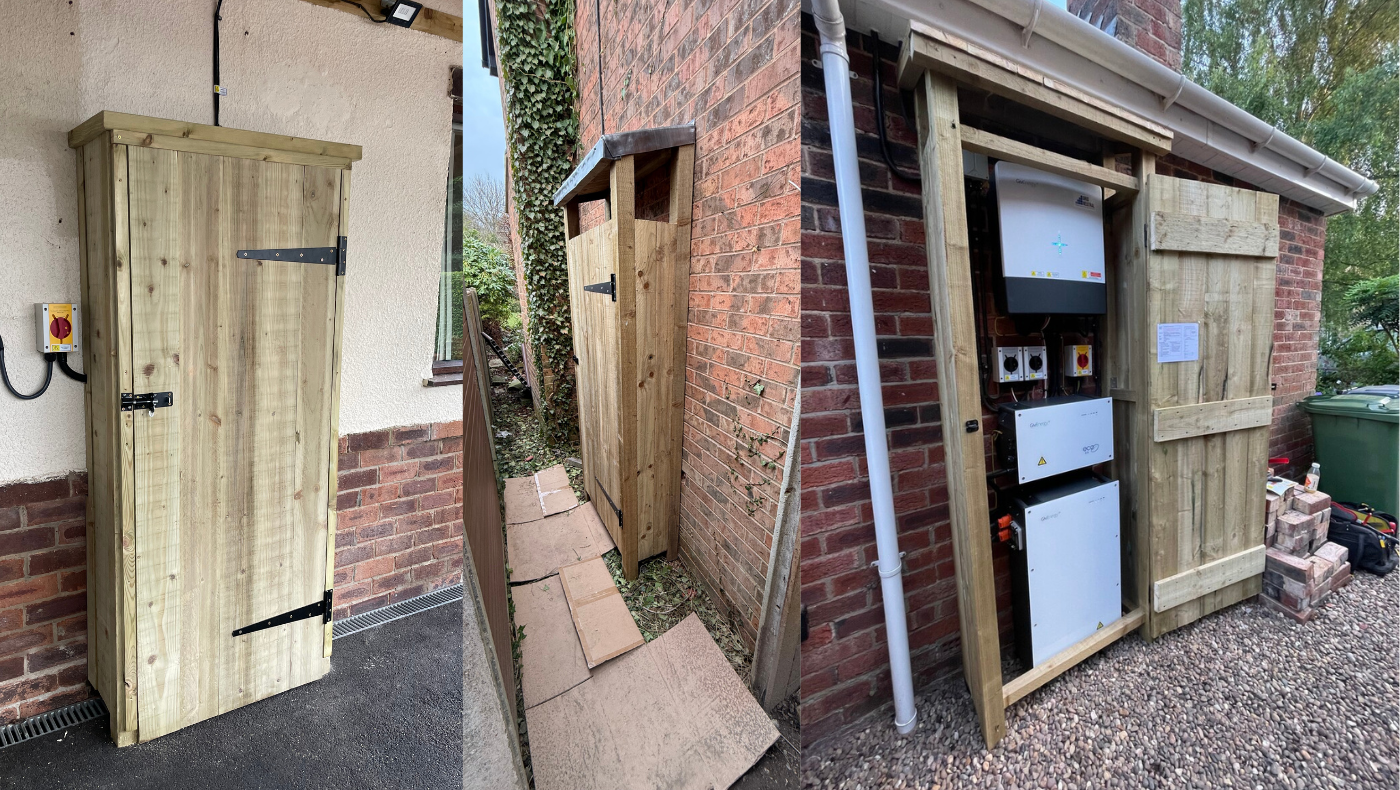Installing Batteries and Inverters Outside: What You Need to Know
Solar PV Battery and Inverter, mounted in an outdoor enclosure built by Grid Neutral.
Can Solar Batteries be Installed Outside (UK)?
Yes – solar batteries can be installed outside in the UK, but only if they are housed in a suitable weatherproof enclosure and the installation meets safety and warranty requirements. While most manufacturers recommend keeping battery systems indoors for better efficiency and longevity, there are situations where an outdoor setup is the practical solution. In this article, we explain when it makes sense, what protections are needed, and the key pros and cons to be aware of.
Why Install a Battery System Outside?
In the recent project, we used the substantial GivEnergy 9.5kWh battery coupled with a 5.0kW hybrid inverter. Due to its size, getting it into a roof space and securely mounting without imposing a huge load on the floor it can be quite a challenge. The only alternative available in this case was under the stairs, which is also the location of the DB in this 1930's house. However, given the updated electrical regulations and safety considerations (the stairs are the single exit from the upper floors), it was decided to place the system outside. The chosen spot was perfect - tucked under a carport and away from the public view.
Custom Enclosures for Protection
Safety and protection from the elements are paramount. We designed and built a sturdy external enclosure to shield the system from adverse weather conditions. It's not just about protection; aesthetics matter too. The custom enclosure not only provided safety but also blended with the property's exterior. After all, we pride ourselves on our carpentry skills here at Grid Neutral!
Key Considerations for Outdoor Battery Installations
Temperature Fluctuations: The colder months can impact battery performance. For instance, as the battery temperature drops to around 10-13degC, you'll notice an output difference. Most LiFePo batteries will cease charging around 0degC. Some innovative solutions, like insulating boxes, have been employed by our customers to maintain optimal temperatures.
Strategic Location: The orientation of your property can influence battery performance. Batteries on the south face might overheat during peak summers, while those on the north might lack adequate warmth during winters.
Security Concerns: While a system like GivEnergy requires internet connectivity for commissioning, making theft unlikely, other systems might be more appealing to thieves. It's best to install your system discreetly to avoid unwanted attention.
Weather and Ambient Conditions: You'll need to consider factors like rain, snow, and humidity. These can impact the longevity and efficiency of your system.
Ventilation: Proper ventilation is crucial. Modern inverters can generate a fair amount of heat, especially on sunny days. Without adequate ventilation, there's a risk of overheating, which could also affect both performance and the manufacturer's warranty.
While installing batteries and inverters outside is feasible, it's essential to weigh the benefits against potential challenges. If you have an attached garage or utility room, that would be the ideal location. However, if you must install it outside, make sure you're well-informed and prepared.
Ready to explore the best solar and battery setup for your home or business? We are here to help with honest advice and reliable solutions that fit your needs. Get in touch for a free design and quotation and let’s find the right system for you.


